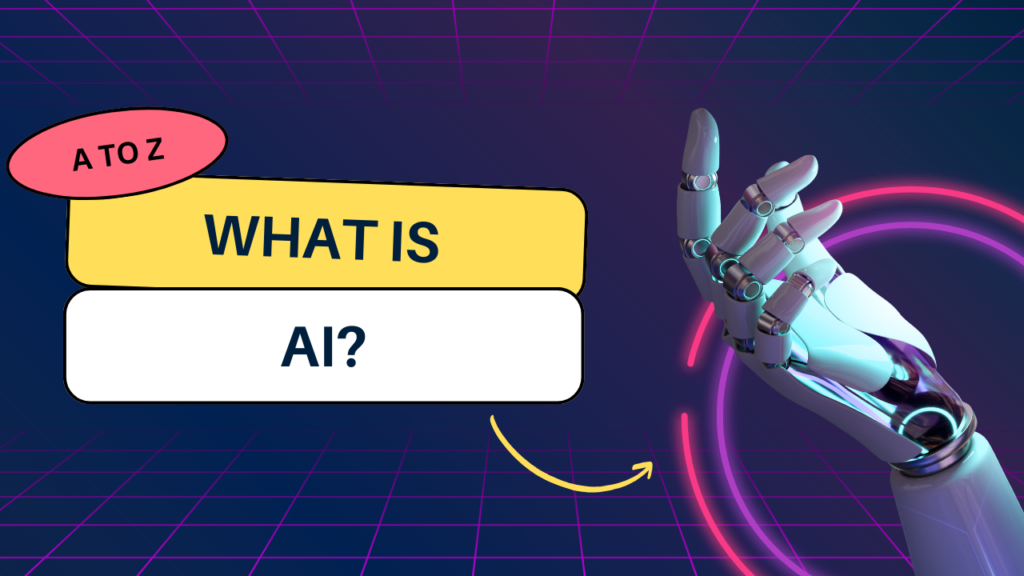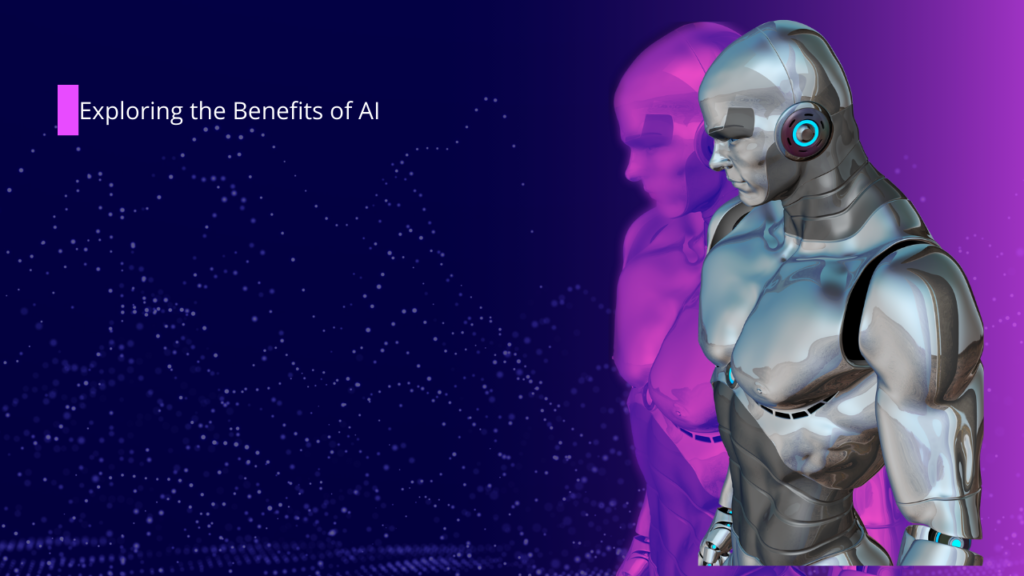
Introduction: What Is Artificial intelligence?
Artificial intelligence(AI) is a branch of computer science that is mainly focused on making systems capable of performing tasks that require human involvement and require human intelligence. These tasks involve various tasks that include problem-solving, decision making, data analysing, and even recognising patterns.
In this beginner friendly guide on what is (AI), we break down AI from A to Z which will help in giving you an explanation on what are the concepts, tools, and the essential terms used in AI.
If you are a tech enthusiast, a student, or a person just curious about AI, this post will be your one stop place in understanding the basics of the world of artificial intelligence.
Artificial intelligence A to Z

🟦 A – Algorithm
An algorithm is a step by step procedure that the computer follows in processing and calculations. In AI, algorithms are the foundations for machine learning and also in decision making models.
🟦 B – Big Data
AI systems require big data to learn. Here big data refers to large sets of data that helps AI to understand various patterns, traini various models, and improve the viability and accuracy of its model.
🟦 C – Chatbot
A chatbot is an Ai tool that is designed to replicate or simulate the conversations between humans . This can be seen used in customer support, and chatbots like ChatGpt which can answer the questions asked and can guide the individuals human like intellectually
🟦 D – Deep Learning
Deep learning is a subset of machine learning that uses neural networks with many layers.
This model is used in many cases, it powers facial recognition, voice assistants and is also used in the self-driving technology used in cars.
🟦 E – Ethics
The rise of AI also raises many important ethical questions about privacy, job loss, and control. Developers must ensure that the AI is used in a responsible and fair way.
🟦 F – Facial Recognition
This technology is widely used today. It helps AI to identify and verify a person by recognising and analysing the facial structures. It is mainly used in smartphones, surveillance etc.
🟦 G – Generative AI
This feature Generative AI helps chatbots and other AI models to create text, images, videos, and many more mashed on the prompts given by the user. This feature is revolutionising the creative industries.
🟦 H – Human-in-the-Loop
Today in many AI systems there is still a human-in-the-loop –there is a person who monitors and validates the outputs given by the Ai to avoid errors and bias.
🟦 I – Intelligence
Artificial intelligence tries to replicate human thought processes from thinking,learning, and problem solving. This can vary from simple to complex decisions.
🟦 J – Job Automation
AI is increasingly automating jobs and various tasks from manufacturing to finance, raising both productivity and raising concerns in job loss.
🟦 K – Knowledge Graph
The knowledge graph is the structure that helps the AI understand various patterns and relationships in between data. Google also uses one of these to improve the search results.
🟦 L – Language Models
Language models like chat GPT understand and generate human language. They power man ai tools such as ChatGPT and other virtual assistants.
🟦 M – Machine Learning (ML)
ML is a type of AI that enables various systems to learn from the given data and improve over time without being programmed.
🟦 N – Neural Networks
This being inspired by the human brain, neural networks process the information in different layers. They play a main role in deep learning
🟦 O – Overfitting
In AI, overfitting happens when a model performs well on training data but fails with new, and unseen data. It is like memorising information without understanding it.
🟦 P – Predictive Analytics
Predictive analysis uses Ai to predict the future events based on the previous data, this is widely used in finance, healthcare, and marketing.
🟦 Q – Quantum Computing
Though this is still in the development phase, Quantum computing could massively boost Ai by processing complex calculations faster than any traditional computer.
🟦 R – Robotics
AI is used to power robots that make human life easier by assisting them in their daily tasks. They can sense, learn, and act in the physical world. From vacuum cleaners to warehouse bots and humanoid robots.
🟦 S – Supervised Learning
A common machine learning approach where the model is trained on labeled data(with the right answers). It is like learning with a teacher in a school.
🟦 T – Turing Test
Proposed by Alan Turing, the Turing test checks if a computer can exhibit human-like intelligence. If you can’t tell it is a machine it passes the test.
🟦 U – Unsupervised Learning
Here, the AI finds patterns in the given data without labelled examples. It discovers the insights without human guidance.
🟦 V – Virtual Assistant
AI virtual assistants like Siri, Alexa, and Google assistant can answer questions, set reminders and control many smart devices and appliances.
🟦 W – Weak AI
Also known as narrow AI, it is designed for specific tasks unlike general AI that can perform various intellectual tasks as a human can.
🟦 X – Explainable AI
Explainable AI (XAI) refers to systems whose decisions can be understood by humans which is crucial for transparency and trust.
🟦 Y – Yield Prediction
In the agricultural industry, Ai helps in predicting the crop yields, optimising planting, and managing the resources through data driven insights provided.
🟦 Z – Zero-shot Learning
Zero-shot learning allows Ai to make predictions without seeing examples of specific tasks during the training process. It is the frontier of innovation.
Why does artificial intelligence matter?
AI is already shaping the world in various sectors from healthcare and education to entertainment and business. Understanding this will help you:
- Stay updated in a digital world
- Make informed tech decisions
- Embrace opportunities and avoid risks
Final Thoughts
Artificial Intelligence is no longer science fiction — it’s part of your everyday life. From chatbots and virtual assistants to smart recommendations and content creation, AI is everywhere. This A to Z breakdown simplifies the complex world of AI and equips you with the terms and tools to navigate this powerful technology.


